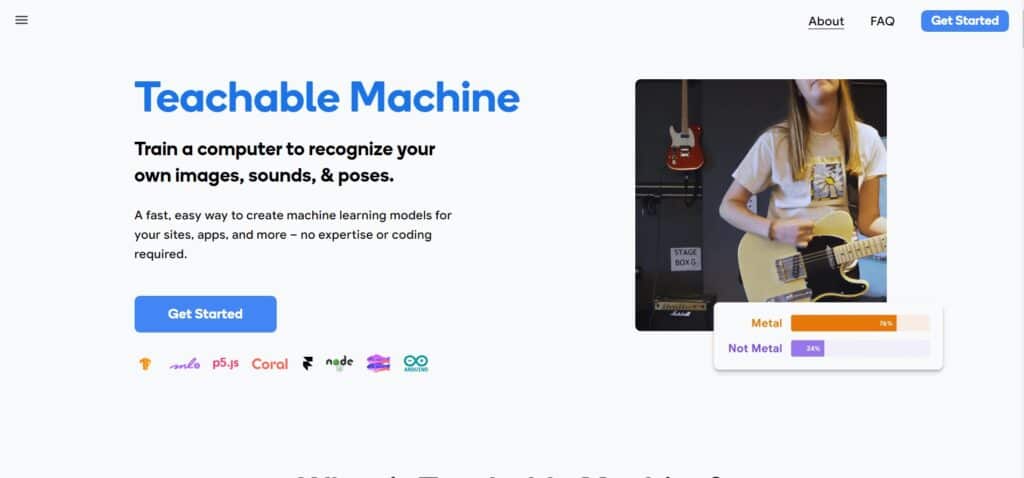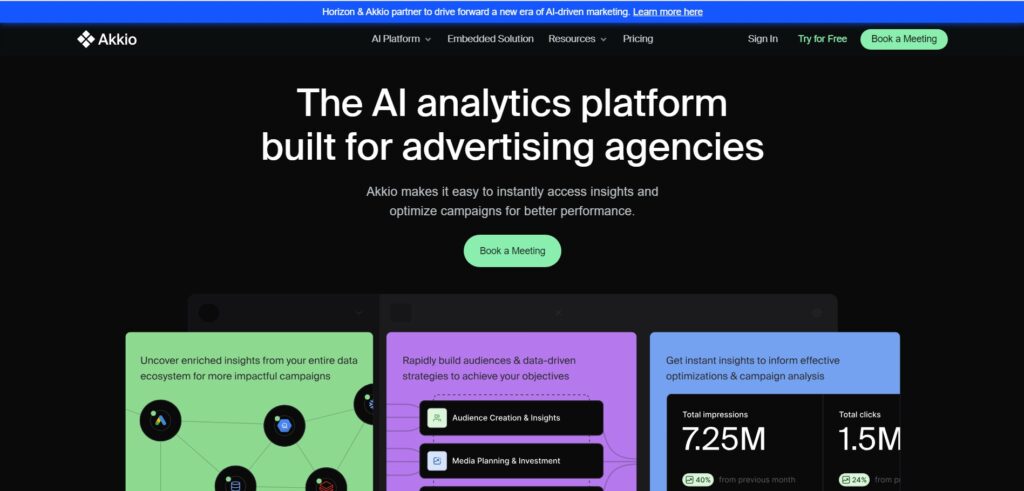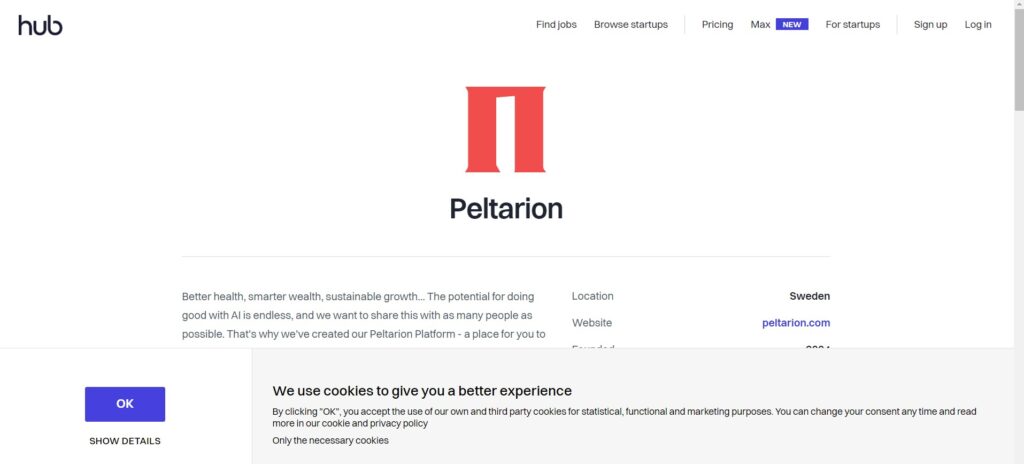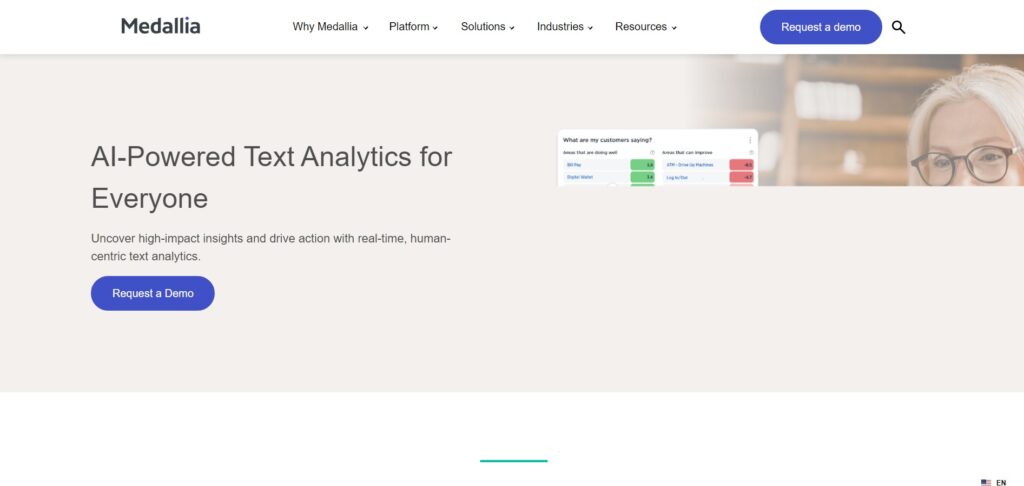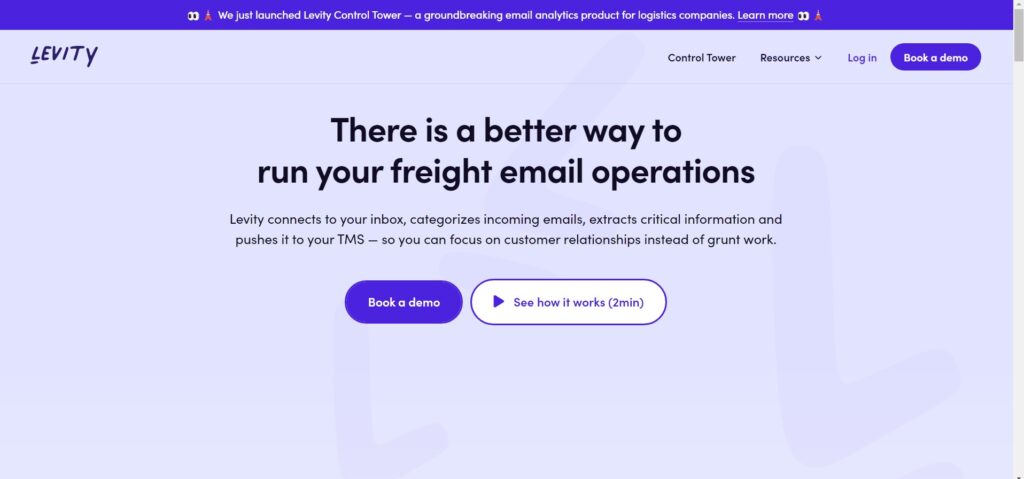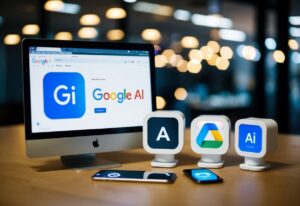No coding AI tools
Top 15 Popular No-Coding AI Tools: Bringing Artificial Intelligence to Everyone:
Artificial Intelligence (AI) has become an essential part of so many industries today, from automating routine tasks to creating advanced user experiences. In the past, leveraging the power of AI meant having a strong grasp of coding and algorithms, which put it out of reach for most non-technical people.
But now, with the rise of no-code AI tools, anyone can tap into AI’s potential without needing to write a single line of code. These tools come with user-friendly interfaces, making it possible for even beginners to integrate AI into their workflows, websites, and projects.
In this blog post, I’ll dive into 15 of the most popular No coding AI tools that make it easy for anyone to build intelligent systems, automate tasks, and simplify operations — all with minimal technical know-how.
1. Bubble
Bubble is one of the most powerful no-code platforms for building AI-enhanced web applications. It enables users to design and develop fully-functional web apps by using a visual drag-and-drop interface. What sets Bubble apart is its flexibility to create complex workflows, making it suitable for advanced AI integrations.
Why It’s Popular:
- No-code, fully-featured development: Bubble allows users to design, develop, and deploy complex web applications without coding.
- AI integration capabilities: Easily incorporate AI-driven functionalities such as chatbots, recommendation systems, and automated processes by integrating popular AI APIs.
Key Use Cases:
- Building AI-powered websites: Create websites that offer personalised recommendations, AI chatbots for customer support, or automated content suggestions.
- Automating business workflows: Use AI to process data, predict outcomes, or improve decision-making processes within the app.
- Launching AI-based startups: Bubble’s rich feature set allows entrepreneurs to rapidly prototype AI-driven solutions without the need for a dedicated development team.
2. OpenAI GPT Playground
OpenAI’s GPT Playground is a no-code platform that allows users to explore the power of AI text generation, using OpenAI’s powerful language model, GPT. With GPT-3 and now GPT-4 available, you can create complex text-based applications like content generation, chatbots, and more, simply by tweaking prompts in an intuitive interface.
Why It’s Popular:
- AI text generation for all: Users can create highly sophisticated natural language processing (NLP) applications, like chatbots or content generators, without any coding.
- Customisable outputs: With the ability to tweak prompts, it allows users to experiment and adjust the model’s responses to match their needs.
Key Use Cases:
- Content creation: Generate blog posts, social media content, product descriptions, or creative writing with ease.
- AI-driven customer support: Build and train AI chatbots that can handle customer inquiries, troubleshoot problems, or provide information in real time.
- Automation of repetitive tasks: Automate writing tasks like summarising documents, drafting emails, or translating text.
Continue reading No coding AI tools
3. Zapier
Zapier connects different apps and services, allowing users to create “Zaps” (automated workflows).
With its AI integrations, Zapier helps automate repetitive tasks, letting you focus on what matters. It integrates seamlessly with AI-powered tools like OpenAI and other machine learning services, making it possible to automate AI-based actions without any coding.
Why It’s Popular:
- Pre-built workflows for AI: Zapier connects over 3,000 apps and services, allowing users to create custom automations between AI tools and their favourite platforms.
- Accessible automation: Zapier simplifies complex automations by using a simple, intuitive interface.
Key Use Cases:
- Automated data entry: Use AI-powered text recognition to process and categorise information, automatically updating your CRM or database.
- AI-driven marketing campaigns: Automate customer segmentation, lead generation, and personalised email campaigns using AI-powered tools integrated through Zapier.
- Routine task automation: Set up Zaps to automate tasks like document generation, customer follow-ups, or even social media postings using AI analysis.
4. Runway ML
Runway ML is designed for creative professionals. It offers a suite of AI-powered tools to assist with video, image, and audio creation, making it ideal for artists, designers, and filmmakers. Whether you want to remove backgrounds, create deepfakes, or generate visual effects, Runway ML empowers you to do so with AI-driven ease.
Why It’s Popular:
- AI for creativity: Runway ML’s tools are tailored for creatives looking to enhance their work with AI, from video editing to image recognition.
- User-friendly design: Its intuitive interface makes applying complex AI models to creative tasks incredibly straightforward.
Key Use Cases:
- AI video editing: Automate complex tasks like colour correction, background removal, or video trimming using AI-driven tools.
- Image manipulation: Use AI models to edit images, generate artwork, or apply effects that would normally require hours of manual work.
- Prototyping and animation: Quickly generate animations or design mockups by harnessing AI’s ability to predict and fill in creative gaps.
5. Teachable Machine
Teachable Machine, developed by Google, is a simple no-code platform that enables anyone to train machine learning models directly from their browser. It’s particularly useful for building image, sound, and pose recognition models.
The platform allows users to upload their own data and train models without any prior knowledge of machine learning algorithms.
Why It’s Popular:
- Beginner-friendly: Teachable Machine makes machine learning accessible to everyone, with a simple and visual approach.
- Quick model training: You can easily train a model in minutes, using images, sounds, or even video, without the need for any code.
Key Use Cases:
- Image classification: Train models to recognise and categorise images (e.g., recognising specific objects in images).
- Sound recognition: Create models that can recognise different sounds or classify audio samples based on specific characteristics.
- Prototype machine learning projects: Quickly build prototypes for AI models without needing to dive into complex algorithms, making it perfect for education and experimentation.
6. Lobe
Lobe is an easy-to-use no-code AI platform designed for beginners interested in machine learning, particularly for image recognition tasks. It enables users to build machine learning models by simply dragging and dropping their data—be it images, sounds, or motions—into the platform, where the model is automatically trained and tested. Lobe’s intuitive interface makes it accessible even for users with no prior experience in AI or coding.
Why It’s Popular:
- Fully automated model training with no coding required.
- Ideal for visual and audio-based machine learning projects.
- Easily exports models for use in web, mobile, or IoT applications.
Key Use Cases:
- Training models to recognise images (e.g., identifying types of plants or animals).
- Creating models for sound classification, such as detecting specific audio patterns in environmental noise.
- Using machine learning in projects like robotics or smart home automation.
7. Akkio
Akkio is a no-code AI platform that focuses on data science and predictive analytics. It allows users to take datasets and build AI models to predict business outcomes, such as customer churn, sales forecasts, or marketing ROI, in a matter of minutes. Akkio is designed for business professionals looking to leverage AI for insights and decision-making without requiring complex data science expertise.
Why It’s Popular:
- Designed specifically for business applications, making it easy to adopt in a corporate environment.
- Simple drag-and-drop functionality for building predictive models.
- Fast turnaround times for generating data-driven insights.
Key Use Cases:
- Predicting customer behaviour, such as churn or conversion.
- Sales forecasting and resource optimisation based on historical data.
- Marketing analytics, allowing companies to optimise campaigns with AI-driven insights.
8. Peltarion
Peltarion is a deep learning platform designed for users who want to build, train, and deploy AI models, especially deep neural networks, without needing to code.
The platform enables businesses, researchers, and non-technical users to work on complex AI projects such as image classification, time-series forecasting, and natural language processing. Peltarion supports collaboration, allowing multiple users to work on a model simultaneously.
Why It’s Popular:
- Powerful deep learning capabilities without coding requirements.
- Supports complex AI models for text, image, and data analysis.
- Collaboration features for team-based AI projects.
Key Use Cases:
- Creating AI applications that analyse text (e.g., sentiment analysis, summarisation).
- Image recognition tasks like detecting objects in photographs.
- Forecasting and predictive analytics for time-series data in industries like finance or logistics.
9. Cogniflow
Cogniflow allows users to create machine learning models without needing to code. It supports various types of data inputs, including text, images, and audio, and offers a simple workflow for training and deploying models.
With Cogniflow, users can build solutions for tasks like speech recognition, image classification, and sentiment analysis. Its accessibility makes it an attractive choice for educators, small businesses, and creatives who want to integrate AI into their projects.
Why It’s Popular:
- Versatile platform supporting multiple data types (text, image, audio).
- User-friendly interface that simplifies machine learning for beginners.
- Quick setup and training for machine learning models.
Key Use Cases:
- Building speech recognition tools for customer service automation or virtual assistants.
- Training models for image classification, such as detecting objects in photos.
- Analysing text data, including sentiment analysis for customer feedback or social media.
10. Obviously AI
Obviously AI helps users create predictive models quickly and easily. It’s geared towards business professionals looking to generate actionable insights from their data, allowing users to upload datasets and have an AI model ready to predict future trends in minutes.
Obviously AI is focused on making predictive analytics accessible, especially for businesses that want to make data-driven decisions without the need for data scientists.
Why It’s Popular:
- Focuses on simplicity and speed in building predictive models.
- Ideal for non-technical business teams needing quick insights.
- Automates the entire AI workflow, from data processing to model deployment.
Key Use Cases:
- Predicting customer churn or sales trends based on historical data.
- Optimising inventory management through demand forecasting.
- Generating predictive insights for marketing campaigns or operational efficiency.
11. MonkeyLearn
MonkeyLearn allows users to create models for tasks such as sentiment analysis, keyword extraction, and classification. It’s particularly useful for businesses that need to process large amounts of text data, such as customer reviews, emails, or social media posts.
MonkeyLearn’s easy-to-use platform helps organisations gain valuable insights from unstructured data with no coding required.
Why It’s Popular:
- Tailored for text analysis, making it perfect for businesses handling large text datasets.
- Pre-built models and a user-friendly interface for customising AI tasks.
Key Use Cases:
- Sentiment analysis to understand customer feedback and sentiment trends.
- Classifying incoming emails or support tickets to streamline operations.
- Extracting keywords and themes from customer reviews or survey responses.
12. Teachable Machine
Teachable Machine by Google is an open-source platform designed to make machine learning accessible to everyone. Users can train their own image, audio, or pose models directly from their browser without writing any code. With just a webcam or microphone, users can create powerful machine learning models and integrate them into real-world applications, perfect for beginners and educators.
Why It’s Popular:
- Extremely easy to use, with no programming skills required.
- Allows users to train and deploy models directly from the browser.
Key Use Cases:
- Building image recognition models for simple object or gesture detection.
- Audio classification projects, such as identifying environmental sounds or speech.
- Educational applications for learning and experimenting with AI.
13. Runway ML
Runway ML empowers creatives to experiment with machine learning in various media, including video, audio, and images. It provides users with access to pre-trained models and allows them to manipulate media in real-time. Whether you’re looking to create visual effects, generate synthetic data, or explore artistic applications of AI, Runway ML provides an intuitive platform for experimentation.
Why It’s Popular:
- Strong focus on creative AI applications, making it ideal for artists and designers.
- Wide array of pre-trained models for creative and media-based machine learning.
Key Use Cases:
- Video editing with AI-generated effects or animations.
- Using AI to create generative art, from textures to abstract designs.
- Developing interactive art installations that respond to audio, video, or environmental inputs.
14. Levity
Levity is allows businesses to automate repetitive tasks using AI. With Levity, users can automate tasks like email sorting, document classification, and image recognition. By offering pre-built workflows and an easy drag-and-drop interface, Levity enables users to integrate AI-powered automation into their daily processes without needing programming knowledge.
Why It’s Popular:
- Focus on task automation, which saves time and resources for businesses.
- Simple, visual interface that allows users to create custom workflows.
Key Use Cases:
- Automating the sorting and categorisation of emails or support tickets.
- Classifying and tagging images for e-commerce or media libraries.
- Automating document processing and categorisation for large-scale data handling.
15. Clarif AI
Clarifai is a powerful AI tool for visual recognition that allows users to build and deploy machine learning models for image and video analysis.
It provides a no-code platform with pre-trained models for tasks like object detection, facial recognition, and scene analysis. Clarif AI is widely used in industries like security, retail, and healthcare to automate tasks related to visual data.
Why It’s Popular:
- Specialises in visual recognition, with powerful tools for analysing images and video.
- Offers both pre-trained models and customisable AI solutions for various industries.
Key Use Cases:
- Facial recognition and object detection in security systems.
- Analysing product images in retail to automate inventory management.
- Video analysis for identifying specific actions or objects in surveillance footage.
In conclusion: The rise of no-code AI tools has truly democratized access to powerful AI capabilities. Whether you’re looking to automate repetitive tasks, enhance customer experiences, or build intelligent systems, these tools make it possible for anyone — regardless of technical expertise — to get started with AI.
By integrating these platforms into your business or personal projects, you can unlock new efficiencies, innovate faster, and stay ahead in today’s increasingly digital landscape. As AI continues to evolve, embracing these no-code solutions will ensure that you remain competitive and adaptable in the ever-changing world of technology.



